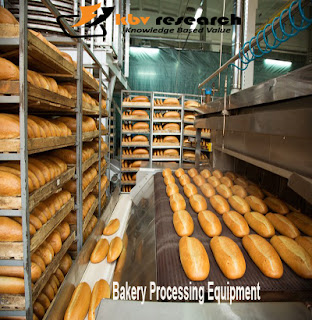Healthcare CRO Services and Pharma: A Bird Eye’s View
 |
| Healthcare CRO Services |
The industry has been witnessing the emergence of a large number of new drugs and the rise of the smaller biotech market. These two factors, combined with the increasing cost of drug production, helped to shift the competitive relationship between pharmaceutical and CROs, providing the impetus for CROs to expand their services and market. The healthcare CRO services industry has been gradually rising in recent years.
What are healthcare CRO Services?
Contract research organizations (CROs) usually provide discovery and development services to the pharmaceutical, biotechnology, and medical devices (often referred to as sponsors) industries, but may also support foundations, academic agencies, and universities.Through planning and performing clinical trials to test the new molecule in humans, CROs organize and perform tasks in the R&D process. Being independent organizations, they provide in the clinical setting an unbiased evaluation of a potential drug and, being they work with other firms, usually provide greater expertise than if the sponsors conducted the trials themselves. CROs derive much of their revenue from sponsor R&D budgets, with work being carried out in the form of outsourced contracted services that are short or long term.
Here’s why pharma companies are using CRO services progressively:
Pharma can have access to skills and knowledge that are not otherwise available within the organization. They can also move from xed to variable cost model to reduce the internal resource utilization. Healthcare CRO programs will give patients greater global scope and access. In addition, they are often of high quality, ensuring more effective implementation along with reducing criteria for oversight. The companies include lower capital costs, quicker timelines for growth and a faster route to market.Healthcare CRO services trends:
The emergence of R&D marketplaces to streamline contract research offering
A major trend in outsourcing pharmaceutical research is the rise of new marketplace types that link pharmaceutical sponsors with CROs, academic institutions, and biotech start-ups through advanced digital infrastructure. Research marketplaces allow sponsors to search for different R&D service providers, participate in a transaction, manage projects, arrange payment schedules and automate the entire cycle of R&D service sourcing. In my own experience, I consider those marketplaces to be extremely useful in curbing overhead management.Rising demand for specialized testing services
Many pharmaceutical and biopharmaceutical companies are currently focused on building a diverse product portfolio and developing new molecules, both small and big. Delivery devices, combination products, and reformulated or re-engineered drugs are being developed by firms to meet unmet requirements.Pharmaceutical industries focus on a variety of specialized testing services, such as liquid chromatography-mass spectrometry (LC/ MS), gene expression analysis, RNA sequencing, compendia raw materials wet chemistry analysis, Inductively Coupled Mass Spectrometry (ICP-MS) trace metal analysis and several others. Pharmaceutical and biopharmaceutical firms tend to outsource these advanced research facilities to CROs in order to save the expense of equipment and labour.
Biotech start-ups drive big pharma’s innovation
Biotech start-ups and small pharmaceutical companies are starting to have a significant impact on the medical research environment in general, and the CRO industry in particular — with a 103% rise in the number of new molecular entities (NMEs) identified by small pharmaceutical firms, which accounted for 63% of all new prescription drug approvals over the past five years. Many such companies develop research collaborations with big pharma to further advance their technologies or provide advanced skills, services and resources in research.Large drug makers' strategic role is now to extend or acquire external R&D collaborations with smaller innovators — 2019 has been a productive year for M&A operation in the pharmaceutical industry. While acquiring tiny, emerging companies is a long-standing strategy for big pharmaceuticals, the M&A landscape will heat up due to an increasingly diverse market of advanced technologies and inventions, and a rising competitive interest in biotech M&As from the side of big CROs and recent newcomers to the pharmaceutical industry — tech giants.
Healthcare CRO services and Machine Learning
Advancements in the efficiency of clinical trials equal savings. For example, an ML platform may enable pre-clinical trials to be performed to allow early detection of populations that are most likely to react to a drug and to identify biomarkers showing the most potential for patient response, thereby refining the compound and the design of the trial.Predictive analytics based on ML are used in the recruiting, retention and interaction of patients. Identifying and hiring the right applicants for example speeds up the timelines for R&D. Patient interaction during the trial is becoming increasingly essential as clinicians extend their use of Health IT including health management applications and wearables.
Real-world data can also be used to build a "digital twin" alongside multi-omic mapping of the patients receiving a research product. It is a reflection of a single person representing over time their physiological and molecular status as well as their lifestyle. For example, digital twins might be used to explain what would have happened to the patient had they been given placebo or the standard of care. Clinicians may use this model to assess various treatment strategies by comparing potential results to the patient, without any real risk.
Summing up
As sponsors face rising regulatory scrutiny, high marketing costs, and patent expirations on key blockbuster products, they are increasingly turning to outsourced specialist providers to lower costs and speed up market time. In addition, CROs' growth has increased over the past few years, with factors including rising spending on R&D, growing penetration outsourcing and the need for more nuanced clinical trials to promote overall market development.Free Valuable Insights: Global Healthcare CRO Services Market to reach a market size of USD 57.1 billion by 2025
We expect the significant amount of M&A activity seen in previous years to continue with a favorable M&A climate and sustained development in the CRO sector. The CRO business is one that continues to evolve as we expand our knowledge of science and technology making the industry 'one to watch' for exciting M&A transactions in the near future.


Comments
Post a Comment